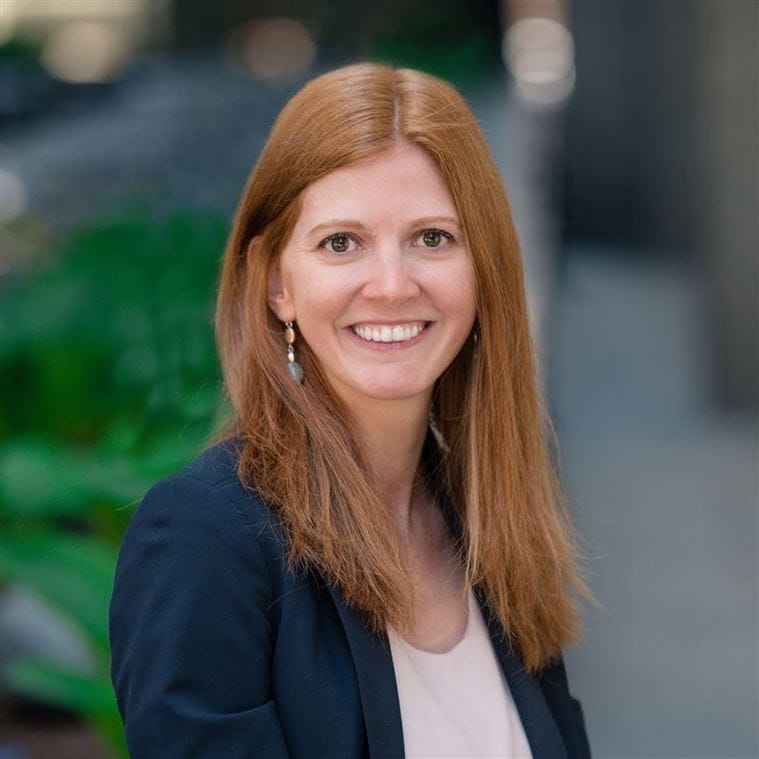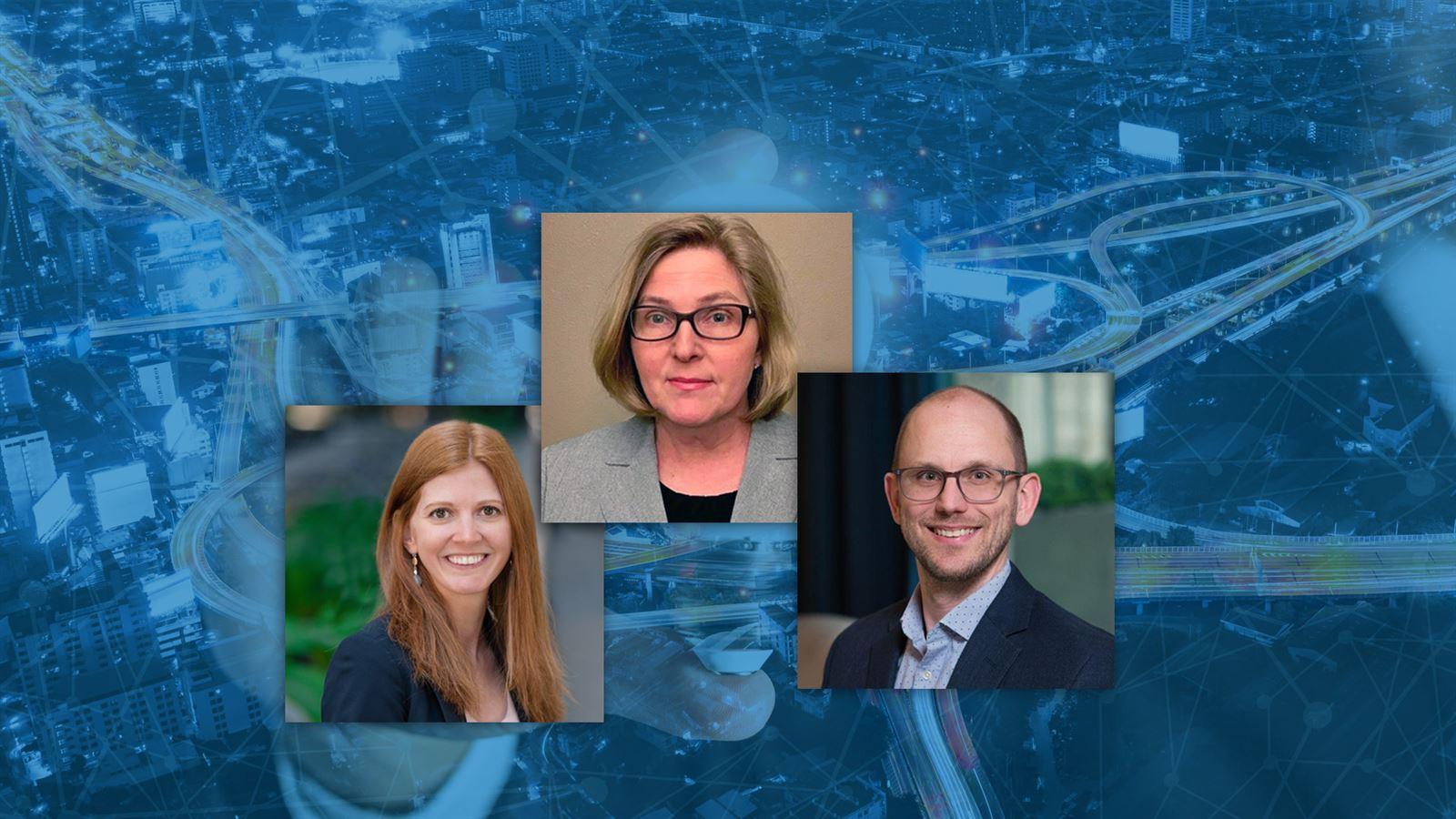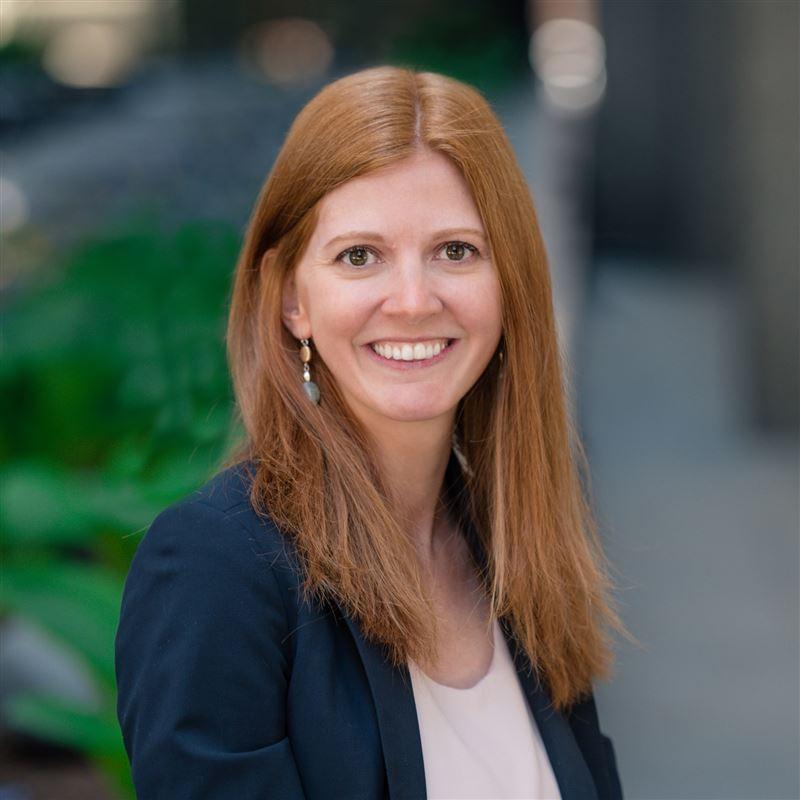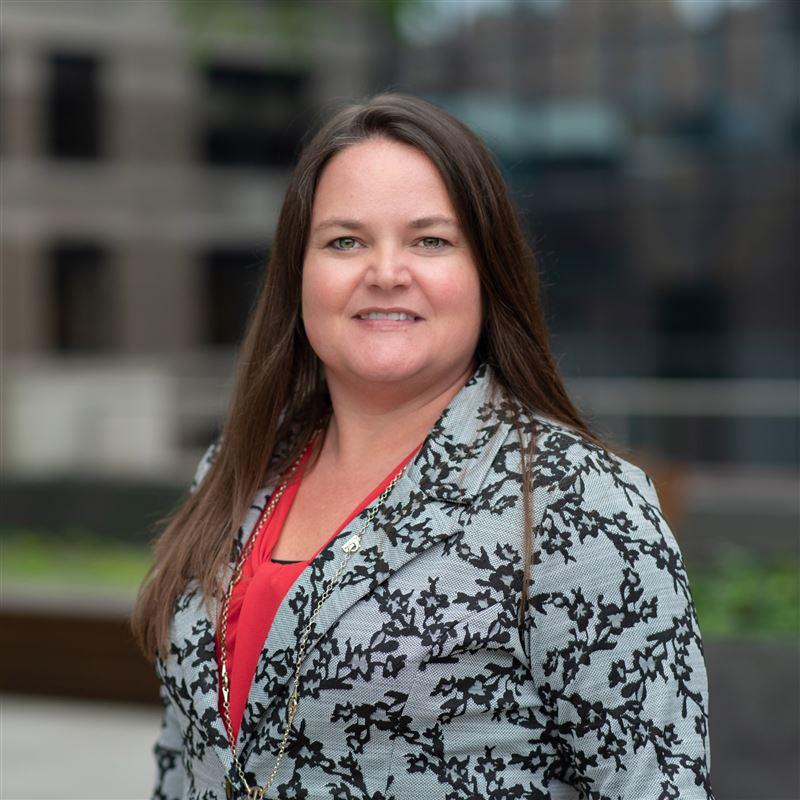Dig Once, Transform for the Future
The term ‘complete corridors’ is new for many, but the philosophy it represents will be familiar to all. Wouldn’t it make sense, when conducting your next roadway replacement project, to also repair underground stormwater infrastructure and build electric vehicle (EV) charging stations while you’re already rerouting drivers and disrupting the community? This is just one oversimplified example of the complete corridors concept, created by CDM Smith to better vision, inventory, design and construct roadways and all other infrastructure within the right-of-way.
As discipline leads for CDM Smith’s complete corridors practice, Scott Sandstrom, Jacki Murdock and Alison Townsend are working across the firm to execute projects quicker and more efficiently. Here, they discuss the roles of teamwork, technology and technical innovation in their jobs and how clients can utilize the complete corridors philosophy on projects big and small.
 Why should urban planners and designers take a complete corridors approach?
Why should urban planners and designers take a complete corridors approach?
Scott: For me, as a transportation designer, one of the biggest benefits of thinking about corridors this way is that there's less disruption—both to the end users and for the agency itself. So, if we’re only digging once out there, we're taking care of everything one time and we shouldn't have to go back out and disrupt people's routes and lives. That’s just a simple win-win for our clients and their communities.
Jacki: On the planning side, increasingly we're needing to look at corridors more holistically. There's more need, whether that's on the resilience side from a flooding perspective, evaluating electric vehicle charging infrastructure opportunities, or thinking long-term about your utility and grid capacity. That means our clients have to utilize a holistic planning perspective if they want to be prepared for what’s to come. It's not just about choosing the surface pavement’s style or adding another lane to manage traffic; it’s about bringing in all the other utility elements to create future compatible corridors.
Alison: So I’ve already lived the complete corridors framework working as a project manager at the Seattle DOT. There, we thought of it in terms of not only minimizing disruption and maximizing integration, but also the idea that we could do more in that corridor with more participants. If we got the utilities in there and everyone was effectively cost sharing, that made our dollars go even further and we could make it truly a complete corridor that satisfied each group’s priorities. And everybody got a little bit more of what they wanted their project to be!
Any project has the potential to be a complete corridors project if that coordination happens early enough.
 In practice, how do you evaluate a right of way to see if it qualifies as a potential complete corridor?
In practice, how do you evaluate a right of way to see if it qualifies as a potential complete corridor?
Jacki: A lot of this is about coordination and forethought. I can give an example from my own project experience. We're doing a transit station project where we’re overhauling a station for a major commuter station that goes right down a main street in the Chicago region. In the process of planning for this station upgrade, we discovered the client also needed to replace their water mains. Originally we were just going to resurface the pavement when we tore it up for the project, but now that we know the client also has this water main replacement program going on, we could work to marry up those timelines so that they can do their water main replacement while we rip up the pavement and then do a more full-scale replacement of the pavement while we’re already doing work in the area.
I would say that that really plays to CDM Smith’s strengths because we are not just a firm of transportation experts; we are energy, we are water, we are environment professionals, too. That means we’re able to bring those experts to the table to align our schedules, our funding… and build better improvement plans.
Scott: The reality is that any project—no matter if it's a large-scale transportation project or a stormwater infrastructure upgrade—has the potential to be a complete corridors project if that coordination happens early enough. And like Jacki said, we at CDM Smith at in the unique position to be able to advance each piece of a project’s scope by bringing in the right people at the right time and making the final result more “complete.”
Alison: Coming from the agency side, I’ll add that most departments within a municipality don’t talk regularly and often DOTs feel pressure to spend their program dollars within a tight timeline. Well, that makes it tricky to align with the long-term nature of planning for a transit corridor. Our job is to push our clients to look outside of their own corridor and what that's going to impact, while also facilitating that communication within an organization so we can work to align all those competing priorities.
The bottom line is we need to build corridors that work for all users. And that requires proactive planning to solve for the transit access problems, resilience concerns and equity issues that face many of our clients in underrepresented user groups.
Jacki: And I would add that a lot of this is just the changing nature that we're finding ourselves in from a federal and state regulatory perspective. The Bipartisan Infrastructure Law changed the game in terms of what the federal government is able to fund in terms of infrastructure improvements. It’s opened up more opportunities for what our clients are able to do within a corridor since many municipalities are ponying up with their own complimentary buckets of money to fund various improvement programs.
One of the classic planning problems is how to integrate transportation and land use decisions. And many states are grappling with this right now, especially as mega developments like EV battery or chip manufacturing plants are being built and causing major traffic implications on their roadway networks that were not foreseen. It requires a lot of coordination to expand a transportation network while also integrating economic development opportunities from the federal or state incentive programs. So we're seeing a big change in the landscape that's allowing us to leverage this complete corridors lens because what is available to fund is different than what was available to fund just a year or two ago.
 What does a day in the life of a complete corridors professional look like?
What does a day in the life of a complete corridors professional look like?
Scott: I'm managing several transportation design projects at once and often there are times when I think, “okay, what else can we be doing here to potentially make this project more complete?” And I try to bring that up with the client in a way that makes it possible both from a schedule and a budgeting perspective. Often if we do a little bit of that early engineering exploratory work, we're not only able to give the client a better scope of what the project will need, but we're able to build in more of that contingency so that that client can plan and fund the full scope of the project. Jacki: From the planning perspective, what I bring to bear is to help Scott out. So that means setting up the project from the planning side to make sure that it's accounting for all of the services and the holistic evaluation on a corridor for Scott to get that scope of work right and to ultimately design and implement a true complete corridor.
Planners will often use the phrase “planning to build it”, and that's really the top strength in our firm’s complete corridors approach. When we’re looking where we could put the associated infrastructure to improve transit speed and reliability, for example, or even how can we best design the storm drains to limit overflows, we’re not just relying on the expertise of one niche engineer. And we’re bringing in those experts a lot earlier in the process to start evaluating the design needs from day 1 so we can more holistically plan for corridor needs.
Alison: I started out doing a lot of environmental work, and I like to think of these corridors in terms of all the potential NEPA impacts on your study area. There’s been times where I can look at the broader scope and say, “oh, I'm not a drainage expert, but, you know, this design element has drainage implications. These trees are obstructing access to power lines…” And once you’ve identified all those potential red flags ahead of time, you can coordinate better.

We at CDM Smith are in the unique position to be able to advance each piece of a project’s scope by bringing in the right people at the right time and making the final result more “complete.”

It's not just about choosing the surface pavement’s style or adding another lane to manage traffic; it’s about bringing in all the other utility elements to create future compatible corridors.

Our job is to push our clients to look outside of their own corridor and what that's going to impact, while also facilitating communication within an organization so we can work to align competing priorities.
Planners often use the phrase “planning to build it” and that's really the top strength in our firm’s complete corridors approach.
 What aspects of innovation or cutting-edge technology do you like most about these types of projects?
What aspects of innovation or cutting-edge technology do you like most about these types of projects?
Jacki: This is an area that CDM Smith has really invested in over the past several years. Many of our clients are familiar with the HoloLens—this immersive experience where you can put on a set of goggles and immediately you’re placed in a design and can explore how a certain concept looks and feels. And we’ve deployed that user perspective successfully on many projects, which helps refine our concept development and alternatives analysis from a technical perspective, because, you know, the district engineer in Texas, for example, can really get a sense of what's working and not working in a concept. I think building on that, one of the things that we're working on as a team is employing other types of state of-the-art technology to visualize project phasing. So what is the phasing of the water main replacement project and then the roadway resurfacing project and then the BRT station design? And we’re always looking to do that quicker and better and more robustly.
Scott: Yes, it’s all super exciting. Trying to find technologies where we can easily share with our clients and the public what we're envisioning for a corridor. And as Jacki said, innovative technology like HoloLens where clients and the public can move around in virtual reality and realize, “wow, like this is what my community could look like with these proposed improvement” is really powerful.
Alison: I’m excited about the software applications that let us dive deeper into what we we’re seeing with real-time traffic data and origins and destinations of trips, demographics and land usage because that allows us to use all this big data to build better models and more effectively allocate the right-of-way.
Jacki: And there’s a scale, right? So there are these very intensive, immersive visual experiences and there's other things like data analytics software and everywhere in between. So we're really trying to provide that full spectrum of options for our clients and choose the medium that works best for their needs.
We need to build corridors that work for all users. And that requires proactive planning to solve for the transit access, resilience and equity issues that face our clients in underrepresented user groups.
 Why are you excited about the potential for complete corridors?
Why are you excited about the potential for complete corridors?
Scott: For me, it's exciting to work for a company that's trying to think differently and trying to improve outcomes overall for our clients and all the people using these improved corridors. And in general, as the complete corridors discipline leader, I'm hoping to be able to share this perspective and the philosophy around complete corridors with everyone else here at CDM Smith. Jacki: I’m proud to be building on CDM Smith’s strength of being a full-service firm in transportation, energy, water, and utilities. And now that the federal and state context has really emphasized policy and funding opportunities for resilience and electrification, it’s giving us the push technically to leverage those strengths as well. My personal vision is to continue to build on CDM Smith’s strengths as a multi-services multi-disciplinary firm and just keep doing what we're doing and doing it better.
Alison: What’s been interesting for me is realizing how many people from all parts of the firm are interested in complete corridors. Having a group of people around you that’s committed to advancing the philosophy and lending their diverse skills is a huge asset for us. If we come up with an issue on a project, we don't have to go find a good sub-consultant or an outside expert because we can rely on people within our own network inside the firm. I’ve been amazed at how many colleagues I’ve met just by working on these complete corridors projects; it's nice that it bring everybody together. We're sharing skills, we're learning new skills and all to the benefit of our clients.









